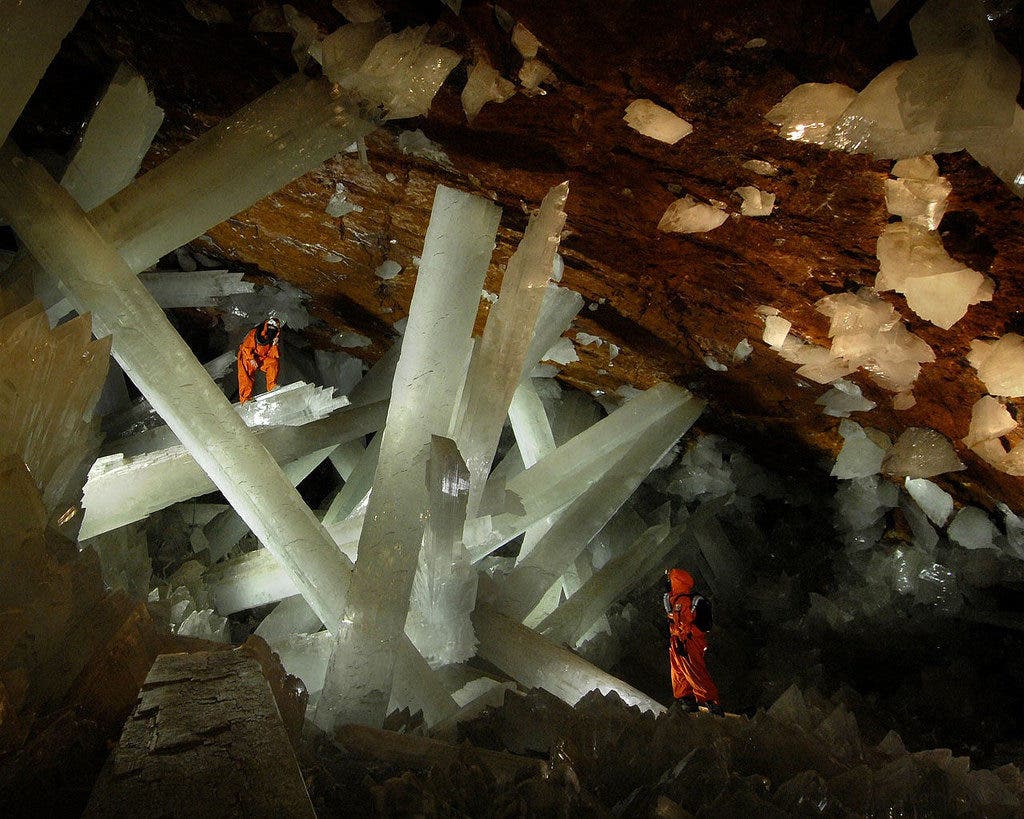Geologists have made a shocking discovery in a crystal-rich cave in Mexico. They found life forms thriving inside giant crystals — life forms which may be 50,000 years old.

The dormant caves in Naica, in the northern parts of the Chihuahua state, Mexico, are both angelic and hellish. They’re so hot that explorers have to cover their bodies with ice and are rich in potentially toxic gasses. However, exactly this terrific environment created giant, gorgeous crystals. To make things even more special, deep within these crystals, scientists have found communities of microbes which are incredibly different from anything else we’ve seen.
These species, 40 different strains of microbes and even some viruses, are so weird that their nearest relatives are still 10% different genetically. Doesn’t seem like much? Well, that means that their closest living relatives are about as close to them as humans are to mushrooms. But that’s not all that makes them so special: they’re also very old, likely at 50,000 years old. They’re not the oldest microbes we’ve found, with other species kicking in at way over 100,000 years, but they’re still really, really old.
“It’s super life,” said Penelope Boston, head of NASA’s Astrobiology Institute, who presented the findings at the American Association for the Advancement of Science conference in Boston.
The microbes and viruses are without a doubt a result of their unique environment. Before the cave was opened up by a mining company, it was completely locked from the outside world, and the tiny creatures evolved parallel to the rest of life. The Naica caves are now abandoned lead and zinc mines, located at 800 meters (2,625 feet) below sea level. For researchers, working in such an environment was extremely difficult. For starters, they had to wear simplified versions of space suits, to avoid any type of contamination. But the caves were also very hot — so hot that they could only work for 20 minutes at a time, after which they were transferred to a “cold room” which was about 38 degrees Celsius (100 F). There, their bodies were completely covered with ice. Genetic studies were conducted and results were compared with the most similar creatures, and the age of the microbes was deducted from the crystal growth rates.
Although this is the result of nine years of work, it still hasn’t been published in a peer-reviewed journal. NASA is typically very strict when it comes to weird life forms, and Boston says she wants to conduct more genetic surveys before anything is published. Yet the results are intriguing, to say the least. They show us (once again) how life finds a way of surviving in even the most hellish and unusual environments.






